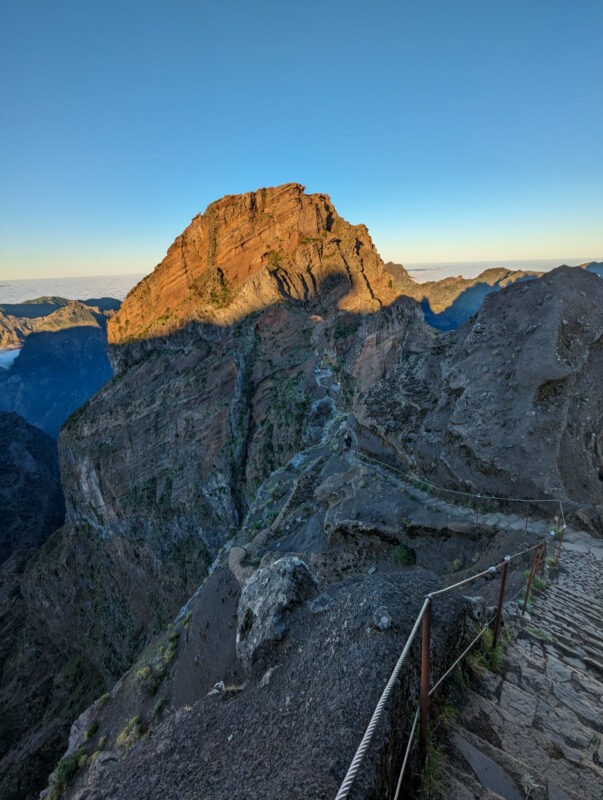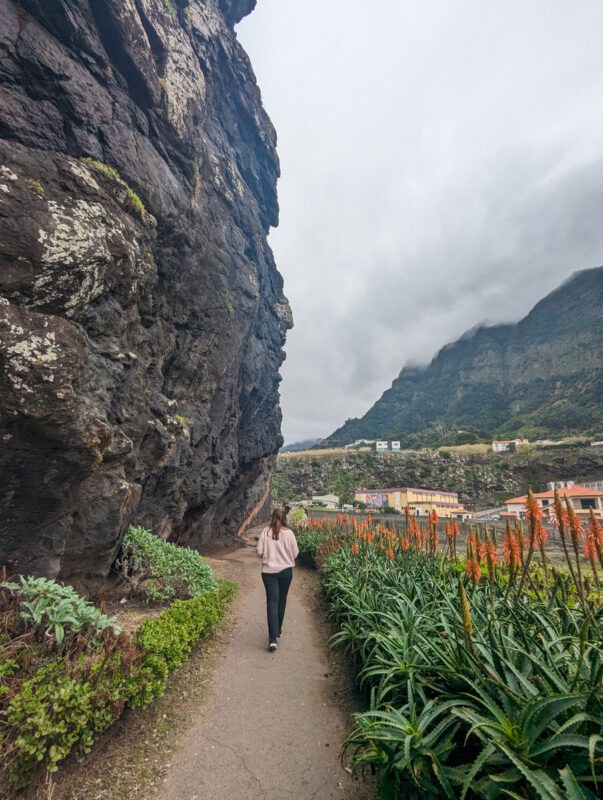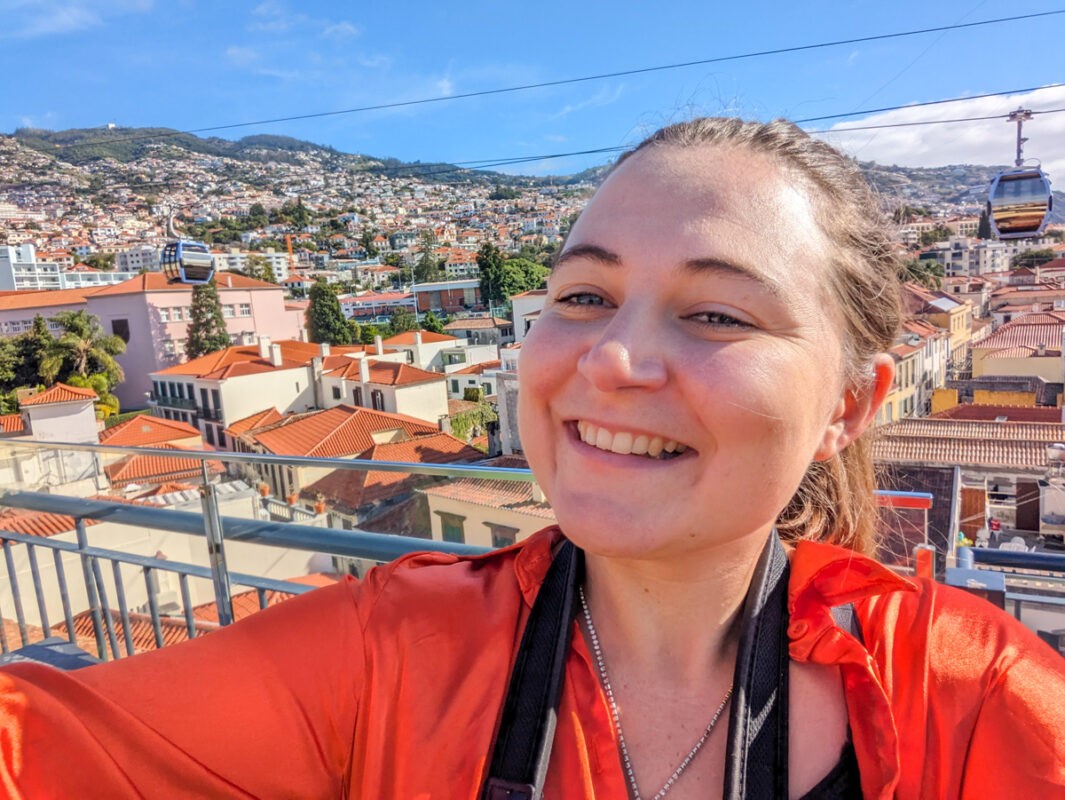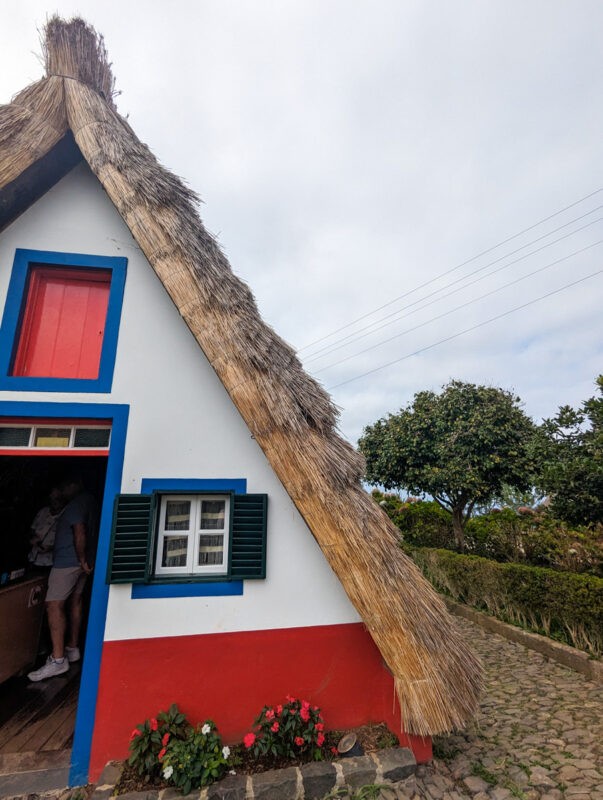Is Madeira worth visiting? Absolutely!
Madeira is often thought to be an older person’s destination, but in recent years (largely thanks to the virality of many of its hikes on social media), it’s becoming increasingly popular amongst younger, adventurous travellers.
I spent four days in Madeira; here’s what I thought about it!
Is Madeira worth visiting?

YES, Madeira is worth visiting!
Its beautiful nature, excellent hiking and unique culture make it a fantastic holiday destination for people of any age and interest.
However, it’s worth managing expectations; while adventurous, nature-focused travellers will love the island, there is a lack of resorts and family-friendly things to do.
Reasons to visit Madeira
Let’s take a look at the top reasons to visit Madeira.
Excellent hiking

Take a look at Madeira’s dramatic peaks and craggy cliff faces, and you’ll see why it’s often revered as a hiker’s paradise!
The island’s unique network of levadas, which are centuries-old irrigation channels, crisscross the landscape and have hiking trails running alongside.
They lead through a variety of landscapes, from lush, emerald-green forests and serene valleys to rugged mountain terrain and cascading waterfalls.
The Levada walks vary in difficulty, catering to casual and seasoned hikers.
One of the most famous routes is the Levada do Caldeirão Verde, a moderately challenging trail that takes you through the heart of the UNESCO Laurisilva forest.
Fancy something more challenging? I climbed to Pico Ruivo, the island’s highest peak, from Pico do Arieiro, Madeira’s third-highest. This was one of the best hikes I’ve ever done – but it was tough!
Diverse landscapes

Don’t worry if you’re not a hiker – you can still get out and about and enjoy Madeira’s epic nature!
There’s an enchanting diversity of terrain from the rugged, rocky coastline with its dramatic cliffs plunging into the azure Atlantic Ocean to the soaring mountaintops.
The heart of Madeira is dominated by majestic mountains and hills rolling into lush, verdant valleys.
The island’s unique Laurisilva forest, a UNESCO World Heritage site, covers a significant part of the interior.
This ancient, subtropical rainforest is one of the largest of its kind, housing a rich diversity of plant and animal species, some of which are endemic to Madeira.
Terraced fields and vineyards also characterize Madeira’s landscapes.
Great winter sun destination

Madeira is an ideal winter sun destination – it basks in a warm and pleasant climate when much of Europe experiences colder temperatures.
The island’s subtropical climate ensures mild winters, with average temperatures ranging from 16°C to 21°C (61°F to 70°F) during the cooler months.
This makes Madeira a perfect escape for those seeking sunshine and comfortable weather. It’s great value during the winter months, too.
The island’s geographical position in the North Atlantic Ocean contributes to its stable climate, with the warm Gulf Stream ensuring that the sea temperatures remain inviting for swimming and water activities even in winter.
The sunny days are complemented by the gentle sea breeze – perfect for picnicking!
That said, there are four distinct microclimates in Madeira and it can be rainy in some areas. Usually, it’s sunniest in the South East, especially Ponta de Sao Lourenco.
Interesting culture and history

Madeira’s culture and history are rich and fascinating.
Discovered by Portuguese explorers in the 15th century (apparently there were no native people on the island, although a few experts doubt this was the case), Madeira has since developed a unique cultural identity that blends Portuguese traditions with local customs.
One of the most notable aspects of Madeiran culture is its folk music and dance, particularly the Bailinho da Madeira.
This traditional dance, often accompanied by folk songs played on local instruments like the braguinha and rajão, is a lively and colourful expression of the island’s heritage.
Madeira’s history is also evident in its architecture, from the charming thatched-roof houses in Santana to the impressive Cathedral of Funchal, which dates back to the late 15th century.
The island’s capital, Funchal, is rich in historical sites, including the São Lourenço Palace, the Santa Clara Convent, and the Fortaleza do Pico.
The island’s festivals and celebrations are another window into its cultural heritage. The annual Flower Festival, held in spring, is a vibrant display of Madeira’s floral abundance, with parades, flower carpets, and exhibitions.
The Madeira Wine Festival celebrates the island’s famous fortified wine, showcasing its history and production process.
Madeira’s museums, like the Madeira Story Centre and the Cristiano Ronaldo Museum, offer deeper dives into specific aspects of its history and notable figures.
The island’s traditional crafts, such as embroidery and wickerwork, are also integral to its cultural fabric, with skilled artisans keeping these ancient techniques alive.
Plenty of food and drink to try

As a vegetarian, I didn’t eat all that much Maderian food (although didn’t find it too hard to find meat-free options). However, for any seafood fans, you’ll love Madeiran cuisine!
Seafood is a staple in Madeiran cuisine, with dishes like espada com banana (black scabbard fish with banana) and atum com milho frito (tuna steak with fried cornmeal) showcasing the island’s love for ocean-fresh catch.
Another must-try is the espetada, succulent beef skewers seasoned with garlic and bay leaves, cooked over an open flame.
Madeira’s subtropical climate allows for a variety of fruits to thrive, leading to delicious preparations like maracujá (passion fruit) pudding, fresh papaya with Madeira wine, and the famous bolo de mel, a rich, spiced honey cake that is a traditional Christmas treat.
The island is also renowned for its Madeira wine, a fortified wine available in a range of styles from dry to sweet. Visit Blandy’s Wine Lodge for Madeira wine tasting.
Poncha is also the iconic cocktail of the island. This traditional drink is made with aguardente de cana (sugar cane spirit), honey, and lemon or orange juice.
Accessible and safe

Madeira is both accessible and safe.
It has a well-connected airport (the Cristiano Ronaldo Airport), which offers regular flights to and from various European cities.
Additionally, the modern road network and public transportation system, including buses and taxis, make getting around the island straightforward and convenient. From the airport, we hopped in a Bolt taxi which took us to central Funchal.
Madeira is accessible to anyone with mobility issues; in recent years, the island has been improving accessibility in public spaces, accommodations, and attractions.
Many hotels, restaurants, and tourist sites are equipped with facilities to accommodate guests with disabilities.
Safety is another significant advantage of visiting Madeira.
The island is known for its extremely low crime rate and is generally considered very safe for tourists.
The local population is friendly and welcoming and healthcare facilities are readily available, with hospitals and clinics providing good medical care in case of emergencies.
Madeira’s well-maintained hiking trails, public spaces, and beaches are monitored for safety; I noticed that the hiking trails are extremely well-signposted.
Welcoming to tourists

Madeira’s been welcoming tourists for centuries; and nowadays it’s a friendly, vibrant place for all.
It has great infrastructure for visitors. Most locals can speak at least a basic level of English, and it has fast WiFi speeds, a good bus network and plenty of tourist-focused activities.
Historically, it’s attracted more older travellers, but its epic nature is starting to make it more popular with younger, active travellers.
Considerations for visiting Madeira

While Madeira is worth visiting, there are some things to consider before planning a trip.
Not much urban life
While Madeira has plenty on offer, its activities fall into either the adventure traveller or older traveller category.
Funchal has a few urban attractions, but if you’re into big cities, it’s not the one for you!
Little nightlife
With the lack of urban attractions is a lack of substantial nightlife!
Madeira is not a party island, and if you’re looking for a European party holiday, I’d recommend heading instead to Ibiza, Zante or Ayia Napa in Cyprus.
Not really a beachy destination
I was quite surprised when I landed in Madeira and learned that there aren’t many broad sandy beaches here. This means that, even though it’s a subtropical island, it’s not somewhere that you’ll go for a “fly and flop” beach holiday.
However, there are a few beaches for the odd beach day and you can also take a boat to Porto Santo which is better known for its beaches.
Limited resorts
With limited beaches come limited resorts!
Madeira is much more of a local guesthouse or Airbnb rental kind of place; for TUI all-inclusive resorts, head to the Canary Islands instead.
Who is a Madeira holiday be excellent for?

- Hikers: Madeira’s extensive network of levadas offers unparalleled hiking experiences, with scenic trails suitable for all skill levels.
- Nature Fans: The island’s diverse landscapes, from lush forests to rugged coastlines, are a paradise for those who love the great outdoors.
- City Breaks with a Difference: Funchal, Madeira’s capital, combines urban amenities with unique cultural and historical attractions.
- Anyone Craving Winter Sun: Madeira’s mild, subtropical climate makes it an ideal destination for those seeking sunshine and pleasant temperatures during the winter months.
Who might prefer to look elsewhere?
- Families with Young Kids: While Madeira is family-friendly, its terrain and activities might be challenging for families with very young children.
- People Looking for a Party Holiday: The island’s nightlife is relatively low-key, so those seeking vibrant party scenes might find it lacking.
- Anyone Wanting to Stay at a Resort: Madeira is more focused on cultural and natural experiences rather than resort-style vacations.
Are you ready to visit Madeira?
There’s so much to do on the beautiful island of Madeira!
For more inspiration, take a look at my YouTube videos.

